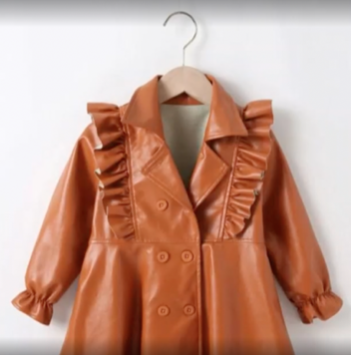The Canadian television channel CBC has broadcast a program where 38 garments for both adults and children from the main Asian textile sales platforms are analyzed. Among them, Shein, Boohoo, Zaful or Ali Express. The study shows that 20% of the 38 samples analyzed exceed the limits allowed by the Canadian Health Agency for heavy metals, PFAs and phthalates. Chemicals classified as highly dangerous to human health by the European Union.
It is not difficult to come to the conclusion that behind a cotton t-shirt that costs €3.25 with free shipping there cannot be a respectful and ethical production model for any of the actors that are part of the fiber transformation process.
Can you imagine what the farmer who grew the cotton or the woman (80% of seamstresses are women) who manufactured said garment may have perceived?
As we have said, it is nothing new. The collapse of the Rana Plaza building in Bangladesh on April 24, 2013 exposed the bad practices of fast fashion. That was the turning point for public opinion to become aware of the problem and for initiatives to emerge that denounce the continuous violation of rights behind this ferocious textile industry model. Fashion Revolution or Slow Fashion Next are some of the projects that work to promote the message and discover alternatives.
But beyond the working conditions at source, are we aware of the risk we run by consuming this type of garment? At first glance we might think that a t-shirt for €3.25 is a bargain, if we only take the price into account. But unfortunately the cost of betting on this textile model goes far beyond what the garment is worth.
We know it well. Organic Cotton Colors was born in 1992 to respond to people with severe skin conditions such as Multiple Chemical Sensitivity, Electrosensitivity, Eczema or Dermatitis. We are aware that the multitude of chemical finishes commonly applied to both the fabric and the final garment can make them toxic for people with a very pronounced sensitivity to chemicals. But, if in addition, during its production, the regulations that restrict the use of these chemicals are not respected, the risk to health increases exponentially.
Among the models analyzed during the CBC study, the most notorious case is that of a girl's jacket that contains up to 20 times more lead than the maximum amount allowed by the European Union.

Miriam Diamont, the environmental chemist in charge of the study, reveals that a garment intended for children who are very likely to suck on the sleeves, not wash their hands properly and put them in their eyes is a health alarm.
But let's go step by step. Did you know that there could be lead in a jacket?
Probably not, since we tend to think that what we don't see doesn't exist. There are many textile finishes, invisible to the eye, that are applied to give fabrics properties that improve their use. Lead is a metal with qualities that increase the malleability of the materials on which it is applied. A very practical and at the same time extremely economical chemical. For this reason, it continues to be used despite the fact that there are already innocuous alternatives for health on the market.
What are the effects of these types of chemicals on a healthy human being after continued exposure?
Exposure to high doses of heavy metals, PFAs or phthalates on a continuous basis is related to the development of brain and nervous system damage, growth and development disorders in children and adolescents and disorders in the behavior of reproductive hormones.
And for those who handle the garments in the countries of origin during long working hours?
The inhalation of dust from textile fibers impregnated with heavy metals, among other chemicals, are responsible for the development of diseases such as cancer, tuberculosis, asthma, some reproductive problems, and fetal malformations, among others. Entire communities are affected in countries like Indonesia or Bangladesh.
Washing the garments, both at the source and at home, increases the problem since the chemicals present in the garments are released with each wash. Reaching rivers, seas and compromising the health of the ecosystem, and therefore of those who live in it.
But if we take into account the existing legislation, what does the European Union say about the presence of lead in textile garments?
On November 1, 2020, the REACH regulation (Registration, Evaluation, Authorization, Restriction of Chemicals in Garments) entered into force, which applies restrictions on the use of up to 33 substances recognized as potentially hazardous, including lead, in textile garments.
If there is regulation in this regard, how is it possible for this jacket for a boy to be marketed within the European Union? The regulation refers to the guidelines that must be followed by the production of companies on European soil but does not affect those garments that are developed in countries where the European Union does not have jurisdiction. Thus, despite the fact that the garments circulate freely all over the word, there is no global legislation that challenges them.
So can we do something about it?
We are sure yes.
As a company, from Organic Cotton Colours we maintain the chain of custody of the material. This allows us to have real control over the transformation processes that the fiber follows and the elements that interact with it during the production process. We can assure our customers that our garments are chemical free.

In addition, we keep up to date in the field of innovation applied to textiles. As the industry advances, we hope to be able to offer new features for our fabrics without the need to include chemicals in them. Applying a waterproof finish to a fabric without the interaction of chemicals is already a reality.
As consumers, it is in our hands to choose better. Prioritize quality over quantity. Buy less and bet on productions that are carried out on European soil, where the productions follow the parameters of specific regulations and laws.
We send you a challenge. Before your next purchase consider:
What is the price I will pay for this garment?